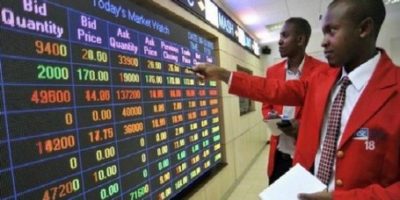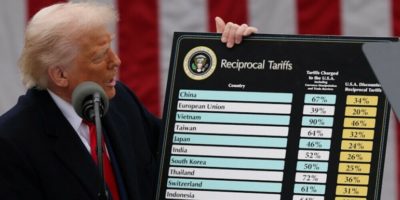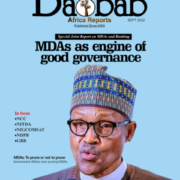Gold prices retreated to around $3,360 per ounce at the start of the week, driven by renewed demand for the U.S. dollar as a traditional safe haven amid global economic uncertainty. However, in my view, this decline is merely a corrective move tied to profit-taking rather than a structural shift in gold’s broader trend. The fundamental backdrop supporting the precious metal remains intact, both from the perspective of U.S. monetary policy and ongoing global geopolitical risks. This makes gold more likely to retest higher levels with every limited pullback.
Jerome Powell’s recent remarks at the Jackson Hole symposium reinforced this outlook. Not only did he hint at the possibility of a rate cut in September, but he also struck a dovish tone by highlighting rising downside risks in the labour market and slowing consumer spending. This reveals a paradox: the Fed is attempting to reassure markets with policy flexibility, while simultaneously acknowledging challenges that threaten growth. For gold, this is supportive, as it lowers the opportunity cost of holding the metal and strengthens its role as a hedge against fragile economic expansion.
Inflation remains the Fed’s biggest hurdle
That said, inflation remains the Fed’s biggest hurdle. Should price pressures stay above the 2% target, rate cuts may be delayed or delivered at a more cautious pace than markets expect. In my view, this would not necessarily hurt gold, since persistently high inflation sustains demand for tangible assets, particularly gold. In the short term, however, any upside surprise in inflation data could boost the dollar temporarily and weigh on the metal.
On the geopolitical front, risks remain equally critical. Escalating tensions between Russia and Ukraine have resurfaced after a wave of drone strikes targeted Russian energy facilities, raising concerns about potential spillovers to nuclear infrastructure.
Ukrainian President Zelensky’s pledge of an “enduring fight” further underscores the unlikelihood of a near-term resolution. Historically, the more tensions flare in sensitive regions, the brighter gold shines as a safe haven. Any additional escalation could provide the fuel needed for a decisive break above $3,400 and possibly new highs in the medium term.
Ongoing resilience despite prior monetary tightening
Meanwhile, traders are closely watching the preliminary U.S. GDP reading for Q2. Expectations point to 3% growth, reflecting ongoing resilience despite prior monetary tightening. Stronger-than-expected data would strengthen the dollar and pressure gold in the short run, while weaker growth would amplify rate-cut bets and directly support the metal. In my view, even a positive surprise in GDP will have a limited downside impact on gold, as markets today are more focused on monetary policy trajectories than on single-quarter growth figures.
Notably, divisions within the Federal Reserve have also emerged. Alberto Musalem of St. Louis struck a cautious note, warning that inflation remains above target, while Boston’s Susan Collins highlighted economic resilience but flagged tariff risks. This divergence illustrates a “wait-and-see” stance inside the Fed, leaving markets to interpret mixed signals—an environment that historically favours gold’s volatility and safe-haven appeal.
Physical demand in Asia remains relatively subdued, particularly in China and India, due to price swings. Yet with India’s festive season approaching and Chinese retail investors hedging against a weak property and equity market, I expect a gradual revival in physical demand that will underpin gold’s longer-term uptrend. Physical buying often acts as the steady, underlying driver of sustained market trends.
Traders seeking entry points at lower levels
Recent price action also shows that every dip is being met with renewed buying. The swift move from $3,330 to $3,380 following Powell’s speech is clear evidence that traders are seeking entry points at lower levels. I expect this pattern to persist, with any dip below $3,350 seen as an opportunity to build new long positions ahead of stronger catalysts such as inflation data or Fed decisions.
In conclusion, gold is trading in a delicate zone, caught between the strength of the dollar and the Fed’s policy stance, as well as U.S. growth uncertainty and ongoing geopolitical tensions. My outlook leans toward the downside pressures being limited and temporary, while the broader trend remains bullish, supported by rate-cut prospects and eroding confidence in global growth. It would not be surprising to see gold testing the $3,400–3,450 range in the near term if monetary and geopolitical factors align favourably. For now, gold remains more of a “buy-on-dips” asset than one at risk of collapse.
Technical Analysis of Gold (XAUUSD) Prices:
The 4-hour gold chart shows improving bullish momentum following a rebound from the strong support area near $3,320, which aligns with the 100-day simple moving average. This rebound has pushed prices back into the “Golden Zone” between the 0.618–0.786 Fibonacci levels, enhancing the prospects for continued upward movement in the short term. The stability of the RSI above 50 further confirms that buyers remain in control of the trend at this stage.






















